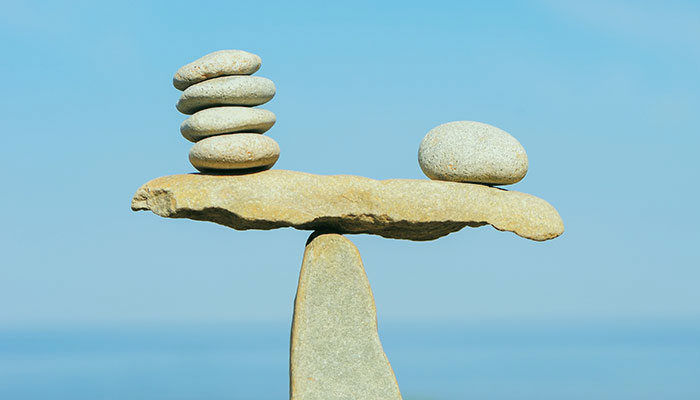Preventing falls
Has your mother fallen recently? She’s not alone! One out of four adults 65 and over experiences a fall each year. That makes falls the leading cause of injury for older adults. Falls are serious! In the United States an older adult dies once every 20 minutes as a result of a fall. Disabilities from a fall include injuries that can be life changing: a traumatic brain injury or broken hip. Especially for seniors, falls pose a danger to an independent lifestyle. They often usher in a permanent need for daily assistance.
Maintaining balance
 The antidote to falling is balance. And strengthening steadiness is a superb way to prevent a fall. But some people simply are more prone to a fall than others. Perhaps the person you care for has one or more of these risk factors.
The antidote to falling is balance. And strengthening steadiness is a superb way to prevent a fall. But some people simply are more prone to a fall than others. Perhaps the person you care for has one or more of these risk factors.
Who is at risk for falling?
Has Mom or Dad fallen twice in the past year? Have you noticed balance or gait problems? Has there recently been a severe fall? These are signs of “high risk.” Other signs involve poor vision or taking medicines that list dizziness as a side effect.
A fall-risk assessment
To be safe, ask your relative’s doctor to do a fall-risk assessment. This includes a review of
- underlying medical conditions. Many chronic diseases affect the ability to get around;
- the home environment. The doctor can write an order for an occupational therapist or other trained professional to do a home assessment. They can identify simple ways to remove hazards and make the home safer;
- medication use. Some types of drugs, or daily use of four or more prescription drugs, increase the risk for falling.
Preventing falls
A recent review of numerous studies shows that some strategies are better than others. The most effective measures for preventing a fall include
- exercise, especially activities that promote balance;
- getting regular eye exams and following through with corrective procedures;
- removing hazards around the house.
- wearing sturdy shoes and slippers. A firm sole is better than a soft cushy one because it’s easier to feel the ground below.
A home safety review

Most hazards around the home are obvious once you are made aware of them. But they are easily overlooked in the course of day-to-day living. Don’t let your loved one get injured because of a simple oversight! Here’s a home safety audit you can do yourself.
Lighting. In every room of the house, be sure there is even light from the center and to all corners. Those little objects that cause a stumble frequently hide in the shadows. A common fall risk arises while moving at night from the bedroom to the bathroom. Place nightlights along the path to light the way for sleepy eyes and a body in a hurry. Stairs and wet or icy walkways also pose extra dangers for a fall, so be especially sure to keep those areas well lit.
Floors. Remove all throw rugs if you can. Or put sticky tape on the underside to pin corners down and keep the rug from slipping. Keep pathways open and tidy. Pick up piles of paper, shoes, boxes, towels, and other trip hazards. Find alternate paths for cords and wires or tape them down to the floor.
Stairs. Be sure to fix uneven or loose stairs. Handrails should be securely fastened to the wall. The edge of the stairs should be painted a bright color with nonstick tread on the surface. If stairs are carpeted, be sure the carpet is securely nailed down.
Bathroom. Bathrooms are particularly dangerous because they combine hard and often wet and slippery surfaces. Be sure to use rubber-backed nonskid rugs and apply a nonskid mat or decals in the tub or shower floor. Grab bars by the shower and toilet are a must. And a toilet seat riser is a good idea if your loved one is at all unsteady rising up from a chair in the living room.
Would you like a home assessment? Give us a call at 1-888-246-2110 (toll free). As the Texas, Washington D.C., Maryland, Virginia and California experts in aging well, we know home safety!
Return to topBalance exercises
If remaining independent is a goal for your older relative, bringing some balance to his or her life is essential—balance exercise, that is.
All it takes is short but consistent focus for Mom or Dad to significantly reduce the chance of a fall. In one study, two weekly 15-minute sessions of balance exercises over a six-month period was enough to make a difference.
That’s only 30 minutes a week. Depending on your situation, this may even be something you can do together.
- Routines are simple. Balance activities such as standing on one foot and heel-to-toe walking are easy to do at home.
- No muss, no fuss. No special clothing, no special gear, and not even much floor space is needed for balance activities. Dad can even hold onto a table or chair until he feels more stable.
Tai chi. It turns out the most effective exercise for preventing falls is tai chi. This gentle activity has been practiced in China for centuries. Tai chi involves slow, graceful movements combined with controlled breathing and awareness of the body’s position.
Research has shown that people who practiced an hour of tai chi three times a week for three months experienced a 43% reduction in falls. They also had a 50% reduction in injuries from a fall.
Tai chi is best done with a teacher and in a class. But if that’s not an option, there are DVDs that teach tai chi. The local library may even have some to lend out.
Get the doctor’s okay first. There are many reasons a person might have poor balance. Just to be safe, ask for a fall-risk assessment before starting an exercise program. You want to be sure your loved one has all the bases covered.
Contact us at 1-888-246-2110 (toll free)
